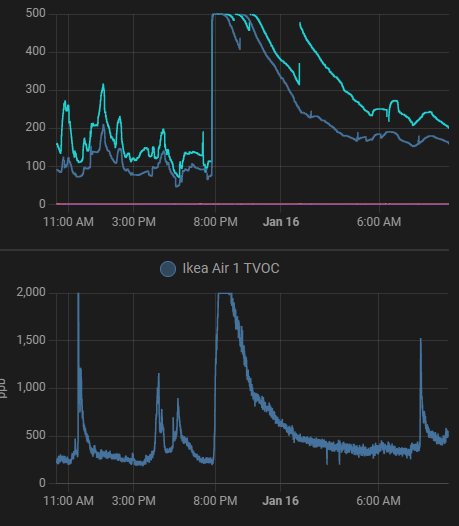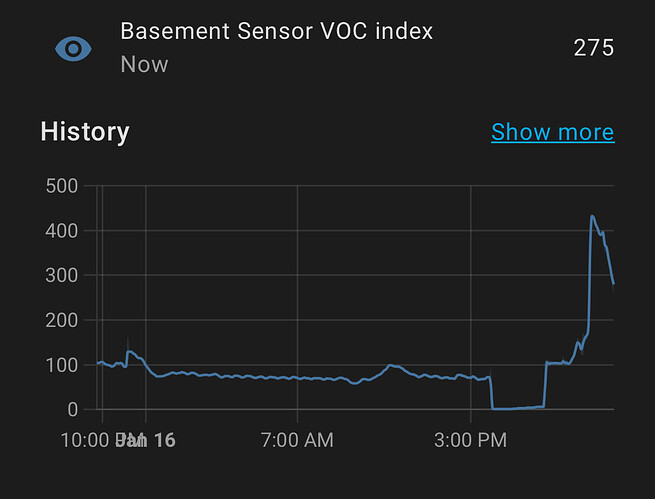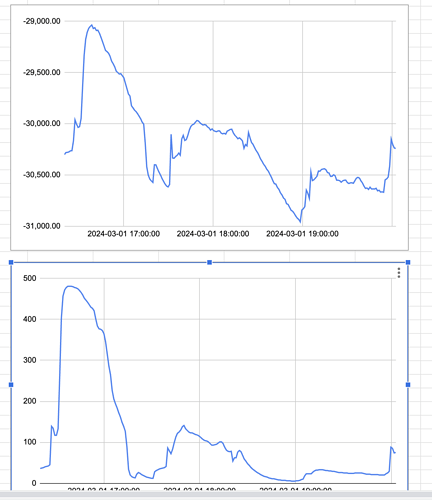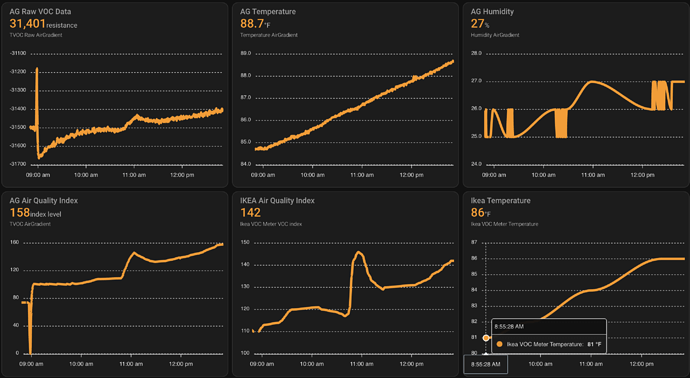I know the ESPHome module for the SGP41 allows you to provide the temp and humidity sensor data for compensation. Does the Arduino code take the same thing into account?
I found this interesting. Last night I had someone try out alcohol inks for an art project in the basement where the top two AirGradient devices with SGP41 devices are located. You can see an immediate spike up to 500 and it is still drifting down 14 hours later.
In the lower graph, I have an Ikea sensor with an added SGP30 that does give values in ppb and also saw a similar spike. This sensor is located upstairs, so the VOCs almost instantly circulated around the entire house. (HVAC fan was running) although it recovered to near baseline levels in under 8 hours.



